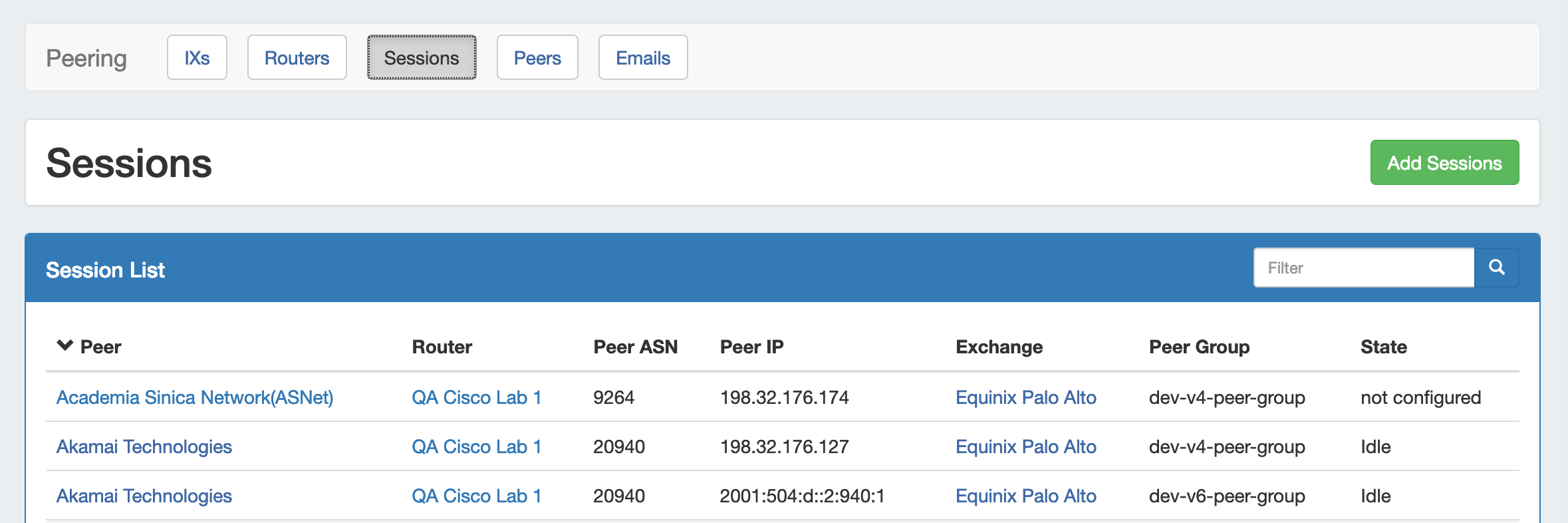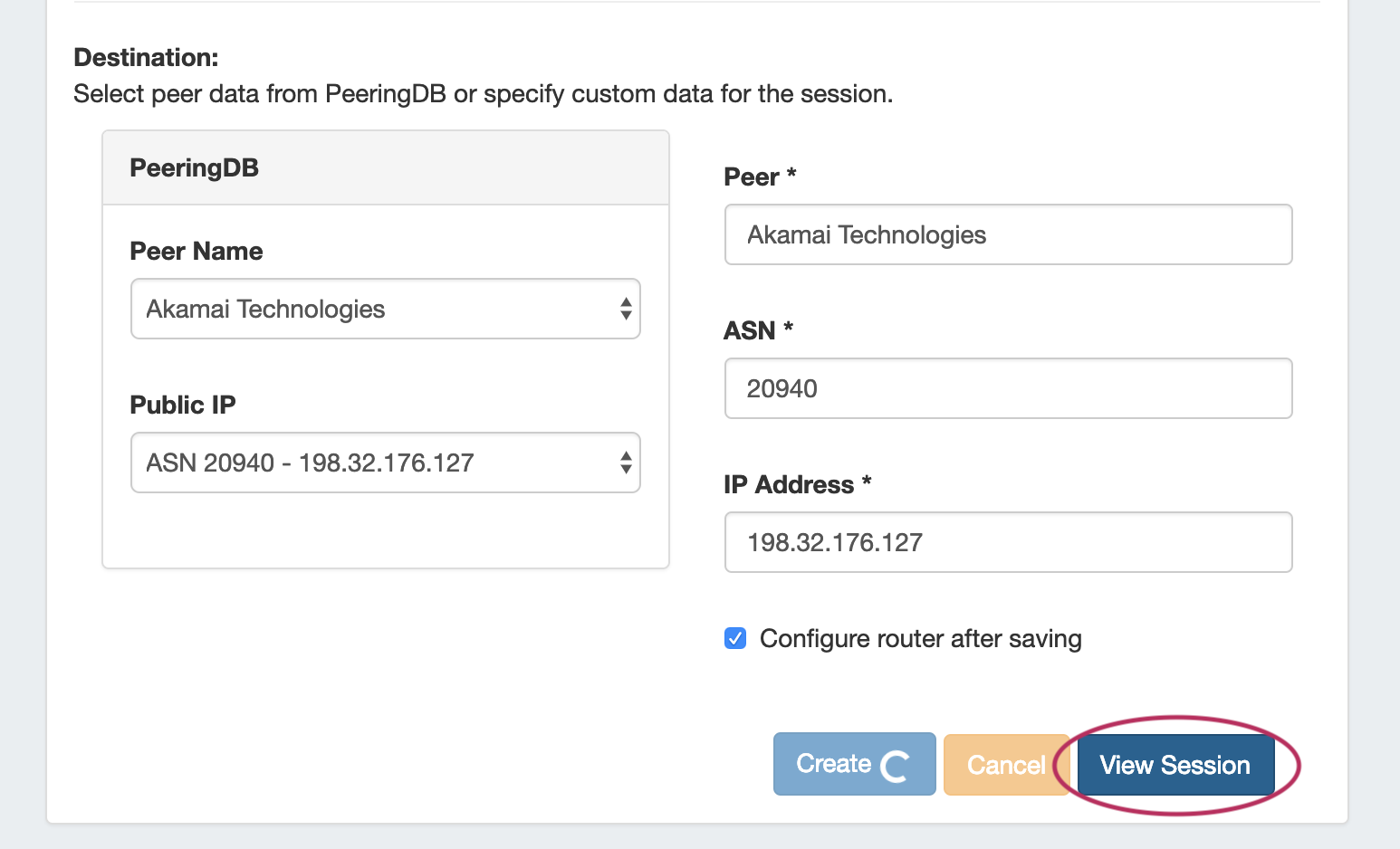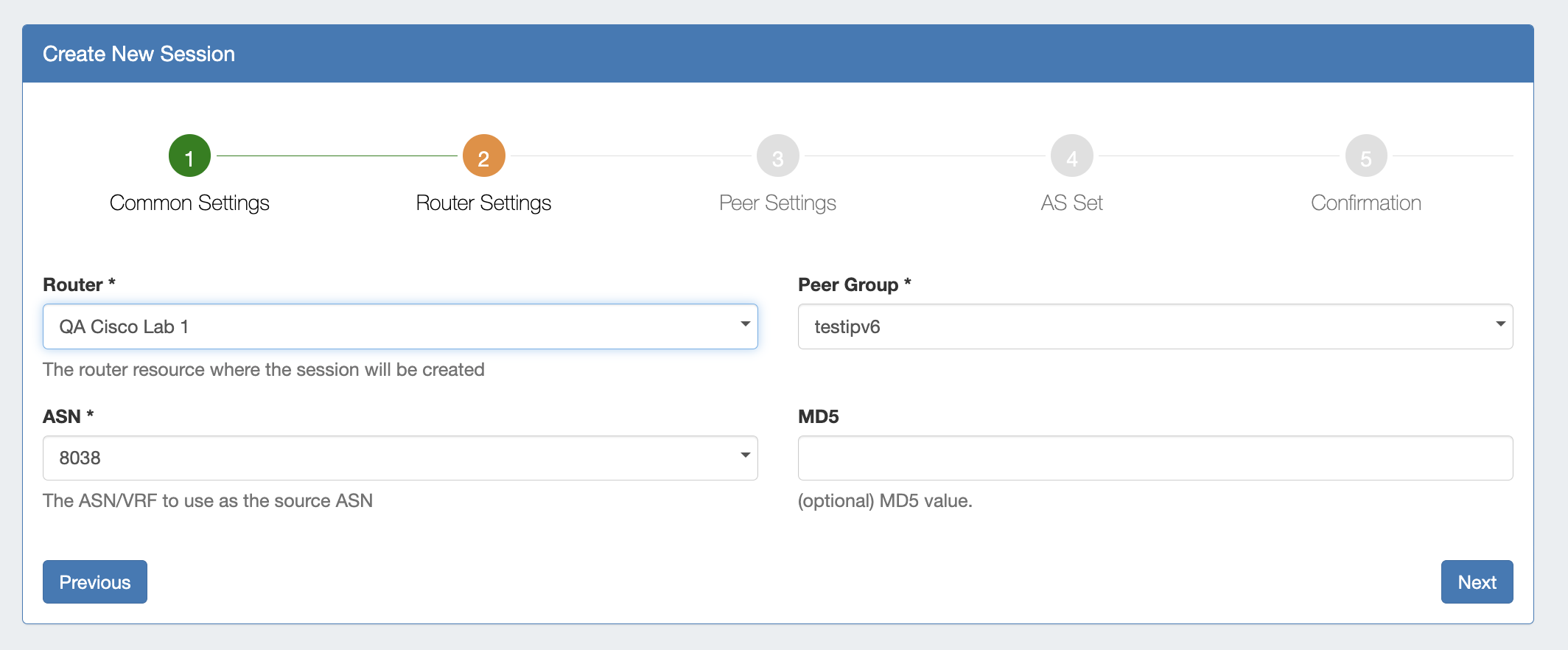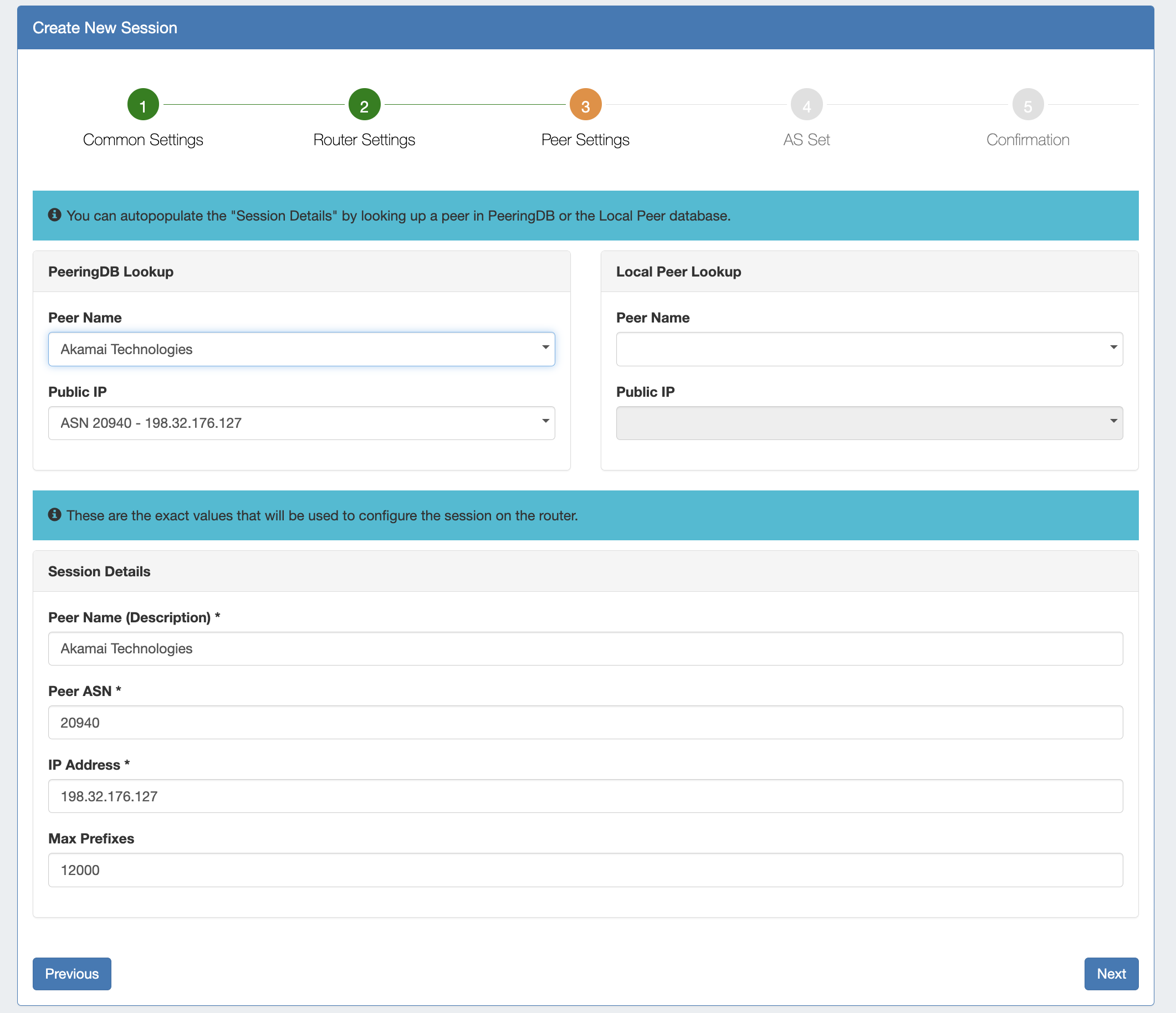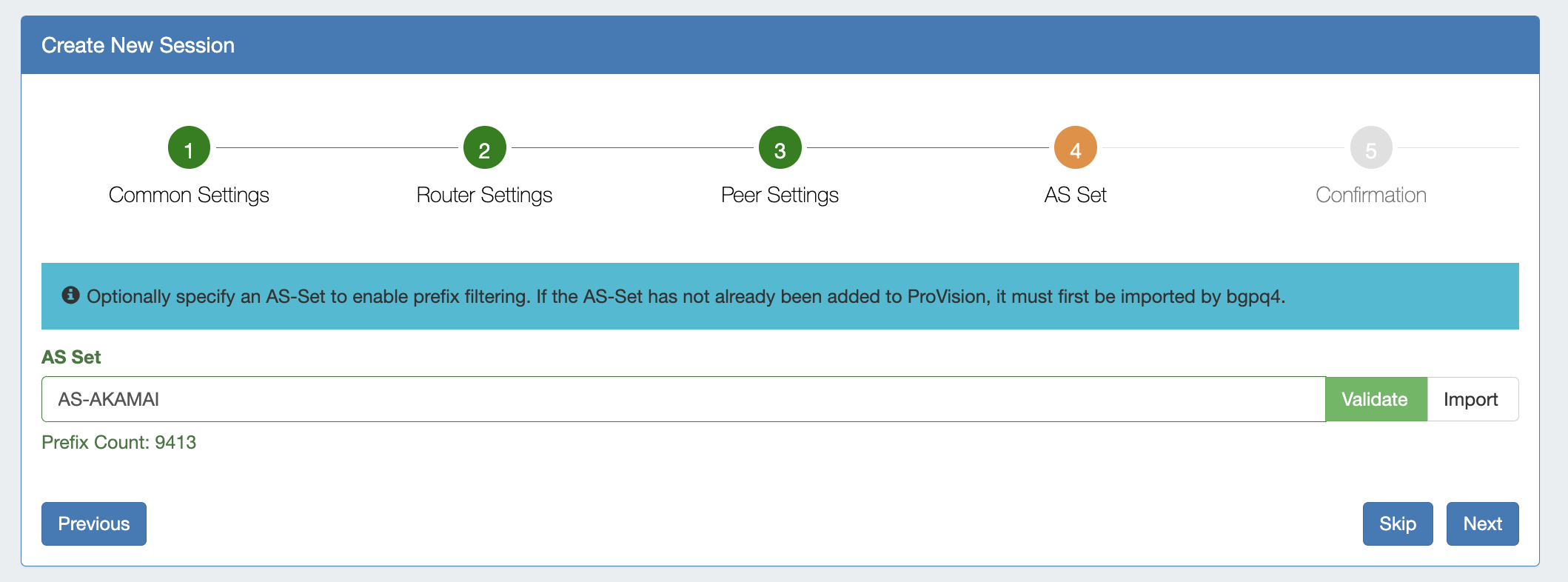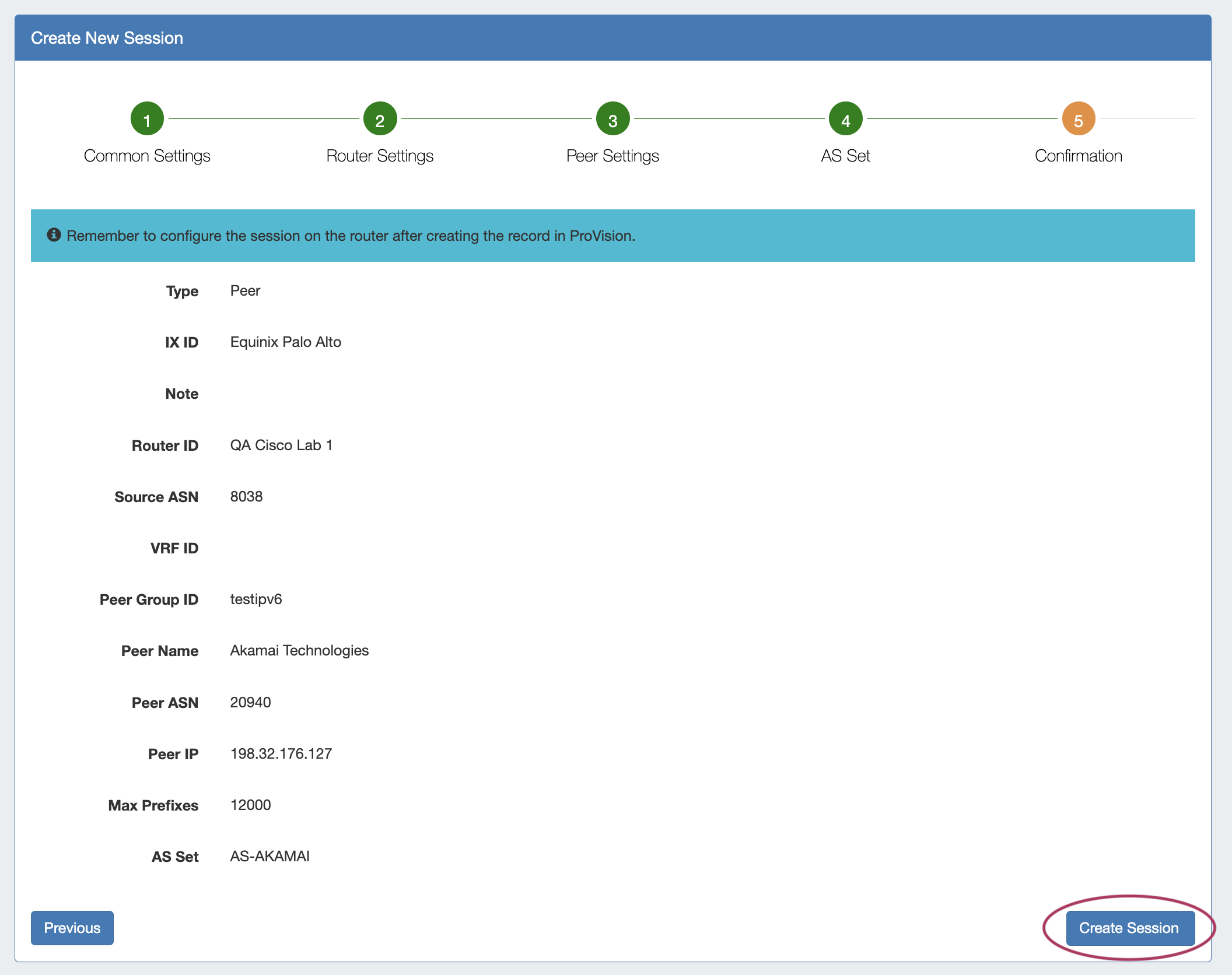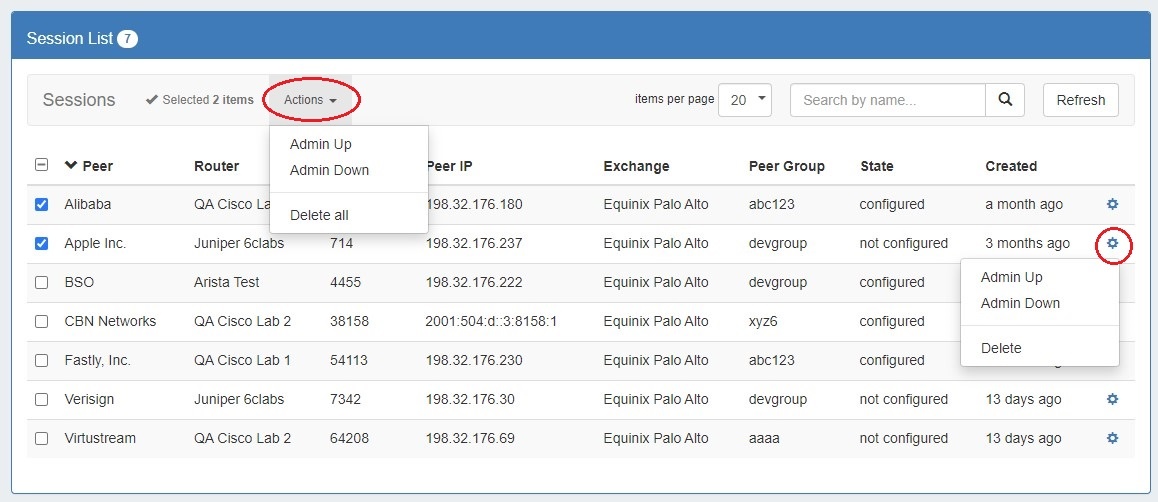Peering Sessions
The Sessions subtab is where current sessions may be added, managed, and updated.
The Session List shows all current sessions in ProVision, and their current information and session state. Update the session states for all sessions by clicking the "Update Session StatesRefresh" button, or manage individual sessions by clicking on the row for the desired session.
...
Add a new session by clicking the "Add Session" button.
Then, add in the session details: at minimum, the type, exchange, router, ASN, Peer Group, and Destination.
After selecting the Peer Destination information, you have the option of configuring the router immediately after saving.
When done, click the "Create" button.
If "Configure router after saving" was selected, the router will configure and automatically load the sessions page when done.
...
| Expand | ||
|---|---|---|
| ||
Add Session InformationClick "Add Session" from the Peering → Sessions sub-tab. Step 1: Common SettingsIn the Create New Session Form, select the session type and exchange for the planned Peer. If using a Local Peer, "No Exchange" is an available option. You may also add notes, if desired. When done, click "Next" to proceed to Router Settings. Step 2: Router SettingsSelect the Router, Peer Group, ASN, and MD5 (optional) values.
When done, click "Next" to proceed to Peer Settings. Step 3: Peer SettingsUnder the Peer Settings section, select or type in information for a peer. You may add Peer information from any of the three available methods:
When done, click "Next" to proceed to AS Set options. Step 4: AS Set (Optional)You may optionally specify and AS Set to enabled prefix filtering. If desired, enter the AS Set. If it already exists in ProVision, you may confirm by clicking "Validate". If it does not exist in ProVision, click "Import".
When done, click "Next" to proceed to final confirmation. Step 5: ConfirmationReview your session details, and if correct, click "Create Session" to finish. To correct any details, you may click "Previous" to revisit earlier steps and update values. The Session detail page will display for review or to perform actions, and the new session will be added to the Session List. |
Manage a Session (The Session Details Page)
...
Delete: Sessions of type "Peer" are removed from the router when deleted in ProVision. Other sessions will only be removed from the sessions list in ProVision.
Session List Action Menu
Several actions are available from the Session List for single or multi-session use.
Select the session(s) and choose the desired action from the right-click menu or "Actions" dropdown menu at top. Options include Admin Up, Admin Down, and Delete.
Additional Information
...

